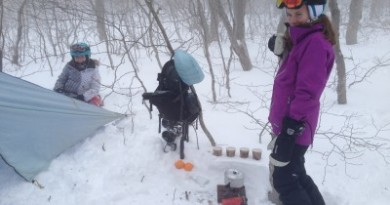How to Power Up Your Paddling
“Most people can probably gain about a mile per hour by improving their paddle stroke,” estimates Dr. Bob Arnot. He should know: during a race he pushes his board through the water at anywhere from four to six mph. Dr. Arnot has raced in some of the toughest SUP races in the world, including Molokai to Oahu, a 32-mile open ocean crossing with 20-foot waves and curious sharks. “It was incredible,” he says “you’re way out in the ocean with this deep deep blue all around you and enormous waves to surf.” “Paddle boarding is the best workout,” he says. “It’s a great test of your balance – your legs are constantly engaged. It’s aerobic and anaerobic, it works your core muscles and it builds strength.”
And, he notes, you can do it anywhere you can find a body of water. “With so many lakes, Vermont is a great place to learn,” he says. When he’s not writing best-selling health and nutrition books (such as The Aztec Diet and 11 other books), the former NBC chief medical correspondent and host of the reality show Dr. Danger can be found training on the Waterbury Reservoir near his home in Stowe or at the Burlington Surf Club on Lake Champlain. Here are some of his pro tips:
The Stance
When I first started out, I thought this was all about strength and my arms and pecks were sore as heck. In truth, there is no better core workout than paddling. When you paddle right, everything is engaged: your abs, your pecks, your hamstrings. To set up the proper stance, stand with your knees shoulder-width apart and bent. Start by making an “A-frame” by leaning forward, using your body to form the left side of the A and then let the paddle form the right side. That’s where you want the paddle to enter the water. Next, extend your lower arm out as far as you can and grasp the paddle, then “stack” your upper arm on top of that. Your body should be facing the side of the board, one arm above the other. How far up or down you hold your lower hand on the paddle is like how hard a gear you use on a bike – higher up will mean a shorter, easier stroke; lower down gives you more power.
 The Catch
The Catch
How and where the blade enters the water has a big impact on how efficient your stroke is. To make “the catch,” the point where the blade catches the water, be its most powerful and effective, you want the paddle to be almost vertical. To do that, you have to stack your shoulders, one over the other, and bend at the waist. Your upper hand should be over your head, your torso slightly twisted and your lower arm reaching slightly forward.
The Stroke
When you put the paddle in the water you want just the blade in. At this point, arms should be straight, your hips should be square but your torso should be slightly turned and facing the side of the board where you are paddling. You want to use your torso and the pressure on your upper hand to pull the paddle through the water and back to your ankle. Any paddling past your ankle is wasted effort.
The Cadence
You typically do 5 or so strokes on one side and then switch to the other. But if you can increase your cadence and do more strokes, you can increase your speed. Don’t focus as much on the power you put into each pull as the speed and cadence. Just like cycling in a lower gear, quicker strokes will have less impact on your body but will keep you moving fast. I like to paddle with a heart-rate monitor and during a race, keep it at about 140 to 160.
Turning
If you simply paddle more on one side you’ll start to change direction but to make a tighter turn, you can use a sweep stroke, by putting the paddle blade on edge as it enters the water and then sweeping out and away from board, like if you were sweeping a broom. A more abrupt turn can be made by back paddling and even more so by pivoting the board. To do a pivot turn, put one foot back to sink the tail and lift the nose out of the water while keeping your blade in the water for balance. Once the nose is out of the water, take a series of short strokes on one side to make the board turn to the other then gradually bring the other foot back forward to the regular position. n



